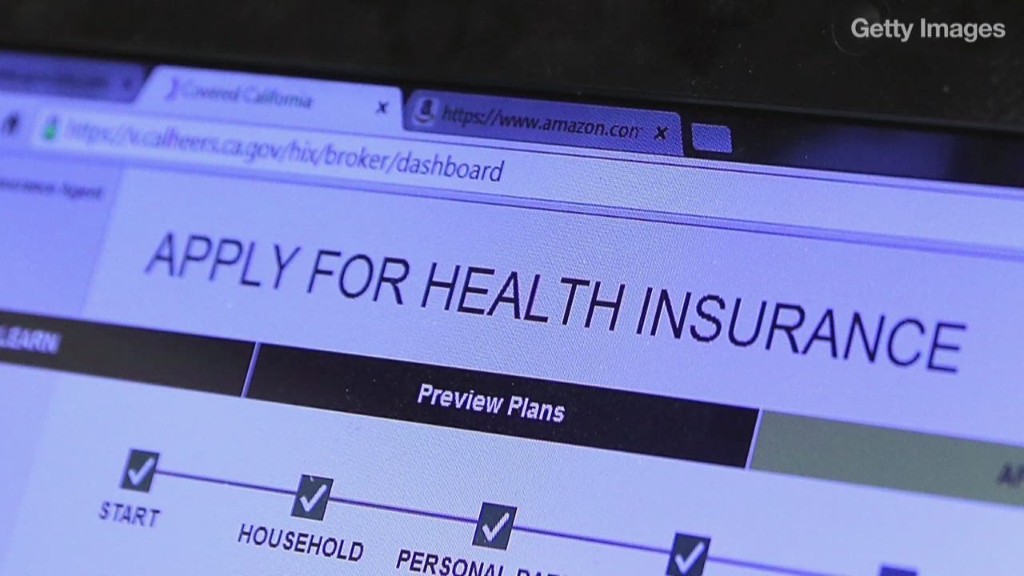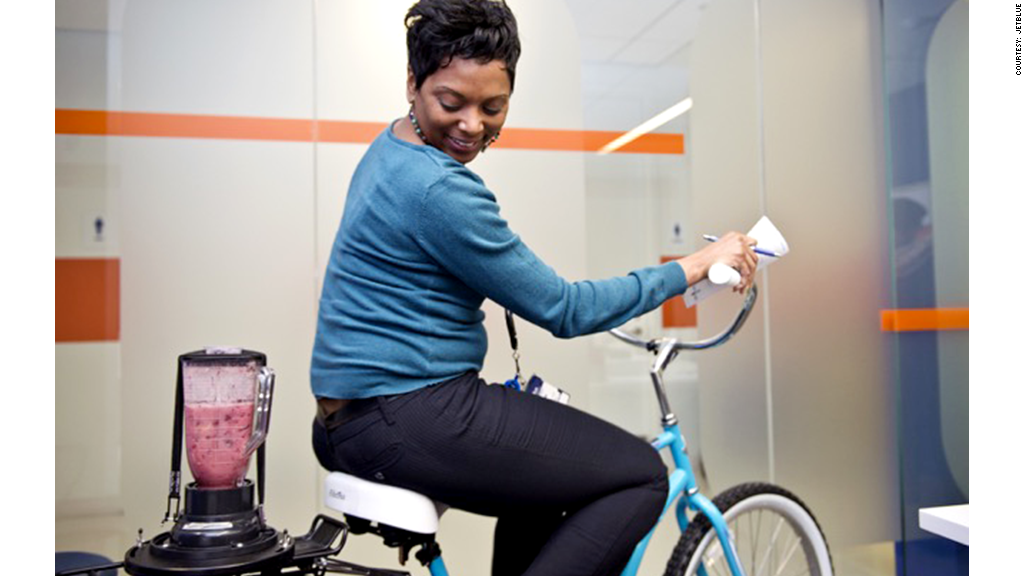
Your mother isn't the only one who wants you to eat right and exercise. Employers are increasingly prodding their workers to lose weight and get more active.
Companies are going beyond just handing out pedometers and offering Weight Watchers. Now more are measuring waist sizes, recording body fat levels and penalizing those who carry around too many extra pounds.
Wellness programs have been around for years, but they are evolving. Companies are doing more biometric screenings, where they measure metrics such as waist circumferences, cholesterol, glucose (sugar levels) and blood pressure, using independent third-party vendors to protect confidential employee data.
The latest trend is to offer rewards -- and penalties -- for workers who are at risk to take action.
"The hardest [metric] to move the dial on is weight," said LuAnn Heinen, vice president at the National Business Group on Health, which found that increasing employees' physical activity and managing their weight are large employers' top health priorities for 2015. "They are shifting to more outcome- and goal-based incentives."
Employers want trimmer workers: Weight is the main concern for many employers since so many Americans are too heavy. Nearly 7 in 10 adults are overweight, and more than one-third are obese, according to federal health statistics.
Share your story: Are your health care deductibles going up?
Obesity is also a risk factor for many expensive illnesses, including diabetes and heart disease. And unlike high cholesterol and blood pressure, it's easy to see.
"Employers know...it's not hidden. You don't have to screen employees. You just have to look at them," said Soeren Mattke, senior scientist at Rand, which looked at employee wellness programs last year.
Related: 5 ways you pay more for health insurance
The number of firms using biometric measures is still relatively small, but more are adopting them, Heinen said. This is particularly true among larger employers.

JetBlue aims high: JetBlue Airways (JBLU) has revamped its wellness program in recent years, adding one-on-one coaching by benefits specialists or registered nurses in 2013 and testing a biometric measuring program this year.
Employees can earn up to $400 in rewards in their health savings account for partaking in certain activities, such as purchasing or owning home exercise equipment, working in a physically demanding job and participating in a healthy cooking class.
Signing up for coaching nets employees $50, but they earn another $200 for finishing it. Workers in the test program can earn up to $500 if they submit weekly weight, blood pressure and waist measurements and if their health improves based on their final biometric reading.
The programs are pretty popular with employees. Some 74% participate in the rewards program and 46% in the coaching initiative, said Kristen Brown, benefits director at the airline. And 76% of the people in the biometric program completed the six-month trial, which also involved counseling. Participants in this trial group were able to lower their risk factors, she said.
Related: How iPhone apps could impact your insurance
While JetBlue is using the carrot approach, others are employing more of the stick.
Penalizing workers who don't participate: Lafarge U.S. offers a voluntary health screening and coaching program. Those who participated this year got rewarded, but those who didn't were limited in their choice of company-sponsored health insurance plans.
Employees at the construction materials supplier can get free individual coaching with Cleveland Clinic specialists. They email their coach what they've eaten and how many steps they've taken, among other things, several times a week.
Everyone who undergoes the screening got a $75 gift card. But those who had at least three risk factors and didn't partake in coaching could not sign up for the company's gold-level insurance plan, which has no deductible and lower out-of-pocket costs. Workers who didn't get evaluated at all could only choose a bronze plan that comes with a $2,750 deductible.
"Our expectation is that Lafarge and employees and dependents are both accountable for health," said Philia Swam, director of health, wellness and group benefits.
(Federal anti-discrimination regulations require that companies allow employees to qualify for rewards or avoid penalties under an alternative standard. For instance, those with certain medical conditions can get a doctor's note that allows them to get the incentives despite having risk factors or not meeting certain goals.)
Related: What does your employer know about your health?
Does it work? Just how effective of wellness programs are -- both in shedding pounds or in saving money for companies -- remains in debate. Only 10% of employees participated in weight management and 21% in fitness programs, according to the Rand study. And only 2% of employers reported actual savings estimates.
At Lafarge, some 97% get screened, but only 19% participate in the health care coaching program, Swam said. But the company is seeing results, she said. The number of employee hospitalizations has declined, while the number of preventative health care visits and tests, such as mammograms and colorectal cancer screenings, is up.
JetBlue, meanwhile, is trying to focus on workers who have risk factors but are not yet sick, Brown said.


